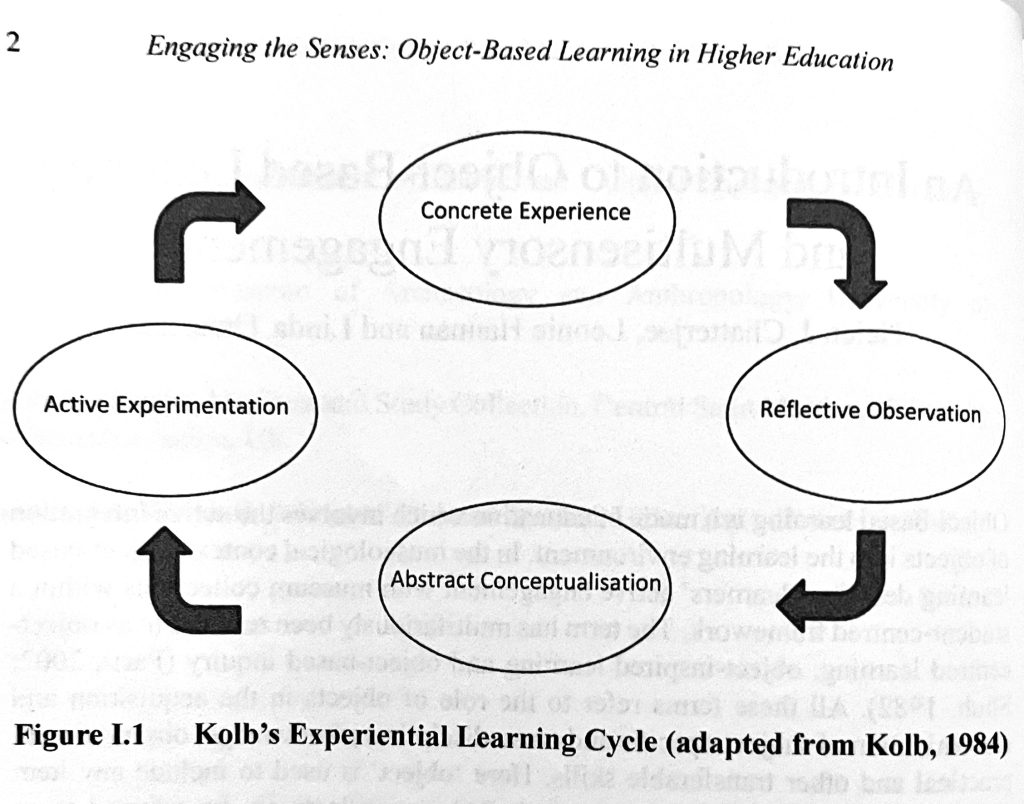How do we make meaning? How do we use meaning to form connections and build knowledge? How does the relationship between various sensory inputs impact the ways we form connections and knowledge? What role does creativity have in expanding the teaching/learning sensory experience? For some time, I have believed the answer to the latter was a lot, and reading “On the spectrum within art and design academic practice” (Damiani, 2018) fortified my opinion.
It is not controversial to say that western academia has long prioritised ocular-centric modes of communication and passive listening. However, there is enormous potential for developing thoughtful (less arbitrary) ways to engage other senses that not only open up more holistic experiences for information exchange, but simultaneously responds to the ongoing need for more inclusive teaching and learning practices, particularly with regard to neurodiversity.
[neurodiversity] embraces many aspects of the brain’s functions and neurological diversity (Pollak, 2009), encompassing autism, dyslexia, dyspraxia, dyscalculia, Asperger’s and attention deficit hyperactivity disorder (ADHD). These are grouped by the different ways that neurons are connected, which brings differences in thinking, in seeing, in filtering, in analysing and responding to what surrounds us (i.e. sound, smell, light, colours, space, images, data, objects, etc).
(Damiani, 2018)
As a teenager, I was diagnosed with Attention Deficit Disorder (ADD) – now referred to simply as Attention Deficit Hyperactivity Disorder (ADHD). Unfortunately, I didn’t have much access to ways to understand and manage the discomfort and confusion I experienced while processing information in a school learning environment. Among other things, I found passively listening to a teacher or reading in groups enormously challenging. My imagination would fire and attention would skew in a variety of directions at once; and left to my own devices, this typically meant that I would begin forming connections with the only active, tangible experience I had access to at the time. So, new planetary facts from the science teacher drifted down the hallways with the sound of footsteps. Algebra lessons became entangled with the smell of warming, pre-prepared lunches wafting from my classmates backpacks. The sensations themselves are obviously not particularly unique to my experience, but rather my heightened sensitivity to arbitrary stimuli led me through a distracting, sometimes exhausting, obstacle course for information processing and proved challenging for keeping up with many of my peers.
But, what if the sensory experiences designed for learning activities had been more diverse in consideration and curation? Could certain neurological tendencies be strengths instead of weaknesses in a different learning environment?

Art and design as activities and topics are “conducive to creativity and experimentation, and key to opening up new possibilities, building new forms of interrogation and critical frameworks” (Damiani, 2018), evidenced by studies that, for instance, highlight students with dyslexia frequently demonstrating artistic abilities naturally developed through finding creative ways think about and examine information (Appleyard, 1997).
In a pedagogical context, object-based learning provides a promising framework for neurodivergent information processes scaffolded.

References
Appleyard, D. (1997) Education: The art of being dyslexic (1997) The Independent. Available at: https://www.independent.co.uk/news/education/education-news/education-the-art-of-being-dyslexic-1280776.html (Accessed: 26 February 2024).
Chatterjee, H.J. and Hannan, L. (2017) Engaging the senses : object-based learning in higher education. London: Routledge.
Damiani, L.M. (2018) ‘On the spectrum within art and design academic practice’, 3(1), pp. 16–25.
Pollak, D. (2009) Neurodiversity in higher education : positive responses to specific learning differences. Chichester, West Sussex, Uk ; Malden, Ma: Wiley-Blackwell.